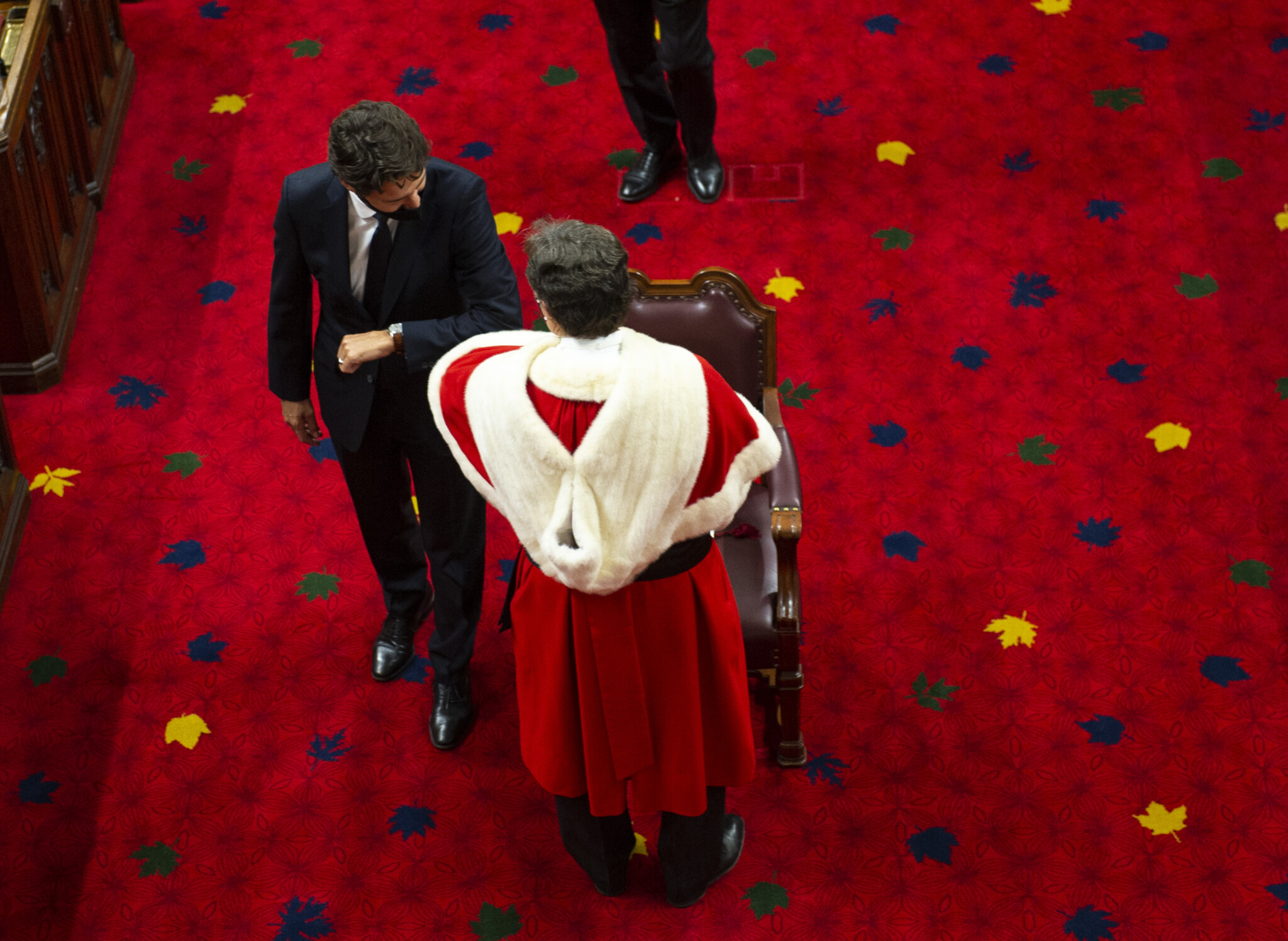Last week, the Supreme Court of Canada released a decision that shook the foundations of Canada’s constitutional structure.
The plaintiff, Joseph Power, brought an action against the Crown in which he alleged that the laws that rendered him ineligible for a criminal record suspension were unconstitutional. He also sought damages under s.24(1) of the Charter alleging that his inability to obtain a suspension had prevented him from finding gainful employment. The relevant legislation was found to be unconstitutional in other cases, and so the only issue for the Court was whether the Crown—the executive branch of the state—could be liable in damages for acts committed during the legislative process.
By a slim 5-4 majority, the Supreme Court said that it could (with two of the four dissenters offering limited agreement with the majority). Power’s case will therefore be permitted to proceed on the merits. Going forward, the Crown will be on the hook to pay damages where a court determines that unconstitutional legislation was enacted in “bad faith,” is “clearly unconstitutional,” or is an “abuse of power.”
It is difficult to overstate the radical shift the decision in Power represents. It is uncontroversial that courts can review legislation, but they have historically steered clear of the legislative process itself. There are sound reasons for this rooted in the Constitution.
Parliament and the provincial legislatures are protected by the twin principles of parliamentary privilege and parliamentary sovereignty. The former is expressly codified in the Constitution Act, 1867 and both have been essential features of Westminster parliamentary systems for over 300 years. Together, these principles ensure that the other branches of state cannot interfere with the legislature’s internal workings. As recently as 2018, the Supreme Court reaffirmed that the judiciary is not permitted to scrutinize the lawmaking process.
The majority’s decision in Power subverts these core constitutional principles and implicitly overrules decades of the Court’s own jurisprudence. The judiciary has now established a beachhead on what was previously the sovereign territory of the legislature. Moreover, in putting Parliament “on trial,” as Justice Jamal (joined by Justice Kasirer) put in his partial dissent, the courts will be asked to determine whether the legislature acted in bad faith—an inquest that is wholly alien to the Canadian tradition.
Relatedly, the decision undermines Canada’s “separation of powers.” Under Canada’s Constitution, some state actors can wear multiple hats (for example, ministers are also members of Parliament), but the branches of state themselves—legislative, executive and judicial—are distinct and autonomous. At base, the separation of powers means that one branch cannot infringe upon the powers of another. One could scarcely conceive of a more blatant intrusion than scrutiny of, and damages for, the legislative process itself.
Power also offends the separation of powers by holding the Crown liable for the acts of the legislature. While the concept of Crown liability for damages is well-accepted in Canada, both under the common law and pursuant to s.24(1) of the Charter, that liability has always been anchored to the acts of the Crown and its agents—never to Parliament. Power extends this historic concept of Crown liability without explaining how one branch of the state can be liable for the acts of another. Does this now mean the Crown is also vicariously liable for unconstitutional acts of the judiciary?
Underlying the majority’s decision is the notion of “Charter Supremacy.” The implication of Power is that the adoption of the Charter in 1982 was nothing short of a revolution, upending Canada’s prior order, and establishing a new hierarchy of constitutional law in which the Charter—whose meaning is ever-changing—stands at the apex. Put bluntly, this is not the Constitution our country adopted.
The Charter is certainly the most recognizable part of the Canadian Constitution in the public mind, but it is still just one part. Canadian courts have never wavered from the view that one part of the Constitution cannot supersede or displace another. As Justice Rowe (joined by Justice Côté) put it in his scathing dissent, the Charter did not mark a “clean break” with Canada’s “existing constitutional structures.”
The Charter must therefore be interpreted consistently with Canada’s pre-existing constitutional texts, structures, and principles. Section 24(1) empowers a court to grant a remedy that is “appropriate and just in the circumstances.” It does violence to the words of s.24(1) to interpret “appropriate and just” to include a remedy that is contrary to other parts of the Constitution.
Power comes on the heels of Chief Justice Wagner—the co-author of the majority’s decision—holding a press conference (itself somewhat unusual for a sitting chief justice), in which he lamented “disinformation” and its ability to undermine people’s trust in institutions. The chief justice is understandably concerned about maintaining public confidence in the courts. But to the extent that confidence is in jeopardy, it is at least arguable that the proximate cause is not disinformation from without but disregard from within.

The Supreme Court of Canada is pictured at sunset in Ottawa on Wednesday, Dec. 13, 2023. Sean Kilpatrick/The Canadian Press.
Power is unfortunately a case in point. In infringing upon the legislative branch, the Court has also disregarded the limits of its own constitutional role, and, in so doing, has risked eroding the public’s trust.
In addition to expanding the scope of its own power of judicial review, the Supreme Court has now endowed the judiciary with unprecedented authority over the public purse. Whereas Charter damages for executive conduct were previously limited to a narrow set of individuals who had particular interactions with the state (for example, persons who endured cruel and unusual treatment at the hands of rogue police officers), damages caused by legislation means a theoretically limitless class of claimants, and thus potentially exorbitant damages awards. Even if future decisions narrow the availability of damages to plaintiffs who have been seriously harmed, their collective damages awards are still likely to far exceed the mostly nominal awards we have seen to date.
It should therefore surprise no one if legislatures now invoke the Charter’s notwithstanding clause under s.33 with even greater regularity than they have in recent years—though even that might prove ineffective since the Supreme Court could potentially find that damages under s.24(1) can still be awarded where s.33 has been invoked. The notion that a law could operate (per s.33) but still give rise to a damages award is conceptually incoherent and would be an egregious misinterpretation of the Charter. But this position already has some support in the academy—and in the wake of Power, it can no longer be considered so far-fetched.
In the circumstances, it would be entirely proper for the federal government to spearhead a constitutional amendment to restore institutional balance. Attempts at grand amendments to the Constitution are bound to fail; a surgical amendment of this nature could very well succeed, however. Seven provinces representing 50 percent of the population would need to sign on, but this seems plausible since, presumably, every province would want to insulate itself from potentially significant damages awards and protect the independence of its internal legislative processes. Indeed, the provinces’ attorneys general were united before the Supreme Court in opposing the position the majority ultimately adopted.
Failing an amendment, it will be left to trial and intermediate appellate courts to pick up the pieces. Even granting Power’s premise that an incorporeal legislature could somehow exhibit bad faith, it remains an open question of how bad faith will be proven in a particular case. What sort of evidence will tend to support or refute an allegation that the legislature—as opposed to any individual legislator—acted in bad faith? What documents will the Crown be compelled to produce for discovery? What privileges, if any, will it be able to assert? These questions and more will need to be answered by lower court justices, who will be faced with the unenviable task of developing doctrine from scratch.
Legal uncertainty begets litigation. Trial courts may ultimately apply Power narrowly, but this will not stop ambitious lawyers from commencing claims, at least initially, given the potential upside. Should that occur, our already overburdened justice system will experience further strain, leading to longer delays for ordinary litigants, and increased costs for Canadian taxpayers, who will also be forced to bankroll whatever damages awards are made.
And public opinion will respond accordingly.








